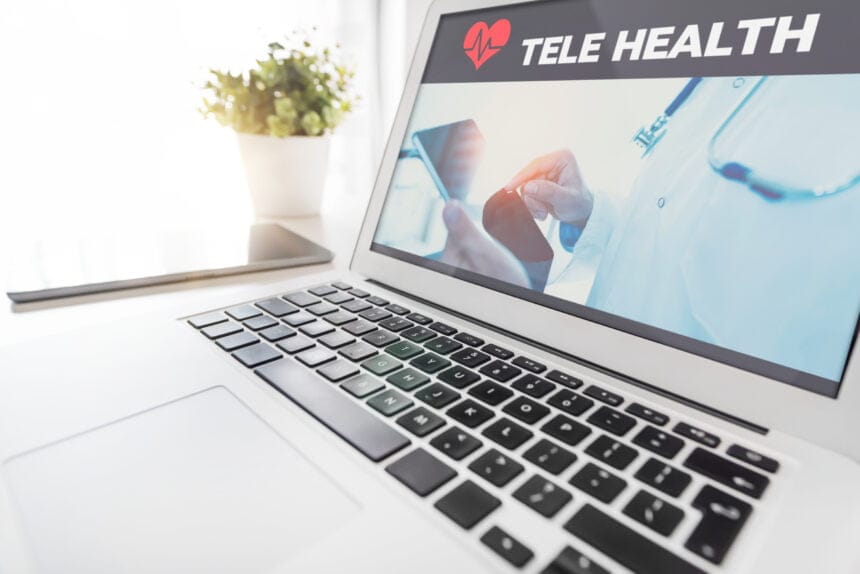AI technology has had a huge impact on the healthcare sector. Healthcare companies reportedly spent over $15.1 billion on AI in 2022, but that figure is projected to be worth nearly $188 billion by 2030.
One of the many ways that AI is changing the state of healthcare is by improving telehealth services. We interviewed Dr. Musaki, a primary care physician in Tel Aviv about the benefits AI has brought to his clinic.
“As a practicing physician, I have witnessed firsthand how much of an impact that AI has had on telehealth. It has led to huge change in my clinic. One of my colleagues states that AI has drastically changed the way we deliver healthcare to our remote patients.” We use AI-powered tools to come up with more accurate diagnoses, to create more personalized plans to treat patients, and to be more proactive about monitoring our patients.
This technology has helped improve the effectiveness of our telehealth services, as well as outcomes for our patients. We can now provide better interventions and help reduce the burden on healthcare systems. We believe that investing more in AI will lead to better telehealth outcomes in the future, which will make healthcare more accessible, cheaper and better for everyone,” Musaki states.
AI is also helping with specialized practice management, such as therapy practices. This is going to be very beneficial for healthcare providers in the future.
The more significant your medical condition is, the more time you will inevitably spend inside a doctor’s office. It’s unpleasantly ironic. People dealing with chronic illness don’t necessarily have the strength to constantly haul themselves to the hospital.
While in-person appointments will never be completely replaced, telehealth technology may provide some patients with other options. Telehealth services allow patients to connect with their doctors remotely, usually in the context of handling quick questions or minor concerns. This can also be a great example of how AI is helping reduce nurse burnout.
In this article, we look at what potential impact that can have on the lives of people struggling to manage chronic illness.
What is Telehealth?
Telehealth services refer to any method of remotely procuring medical information or advice. It has been slowly developing for the last twenty years but became particularly prominent during the pandemic. During the height of Covid, people naturally did not want to enter hospitals or doctors’ offices unless they had to. After all, those are the places sick people go.
In many cases, they leveraged remote technology to access their personal health information and receive insights into what steps they should take to achieve lasting health.
If you think about it, many doctor appointments involve very little physical contact. While most visits will involve a quick overview of your vitals, it is easier than ever to get that information remotely thanks to wearable health technology. Heart monitors, Bluetooth-powered blood pressure kits, and even fitness trackers all provide valuable data points that caregivers can view remotely.
This technology makes it really easy to get quick medical advice. It saves patients a trip to their doctor’s office while also decluttering the local healthcare system a bit. You can hardly turn on the news without hearing about hospital shortages. This technology has the capacity to let hospitals make the most out of the resources they do have.
What Technologies are Used to Deliver Telehealth Services?
Common telehealth technologies involve text or video-based communication. If your hospital uses MyChart or a comparable program, you may already be doing this for small things. These applications allow you to review your test results in real time. They also allow you to ask quick follow-up questions through the text box.
Doctors and nurses using these applications will usually respond within twenty-four hours. It’s not nearly as fast as a physical appointment, but it can be very efficient when dealing with simple questions.
Video or phone-based appointments, meanwhile, can be almost identical to more traditional appointments. Assuming no physical examination is required, you can receive approximately the same level of medical attention that you would have by coming into the doctor’s office.
These technologies have proven particularly popular in the realm of mental health. Since “talk therapy,” does not involve physical contact in the first place, many people have found it preferable to use remote communication channels to interact with mental health professionals. They can save time, avoid the social stigma of being seen at a psychiatrist’s office, and even choose professionals from all over the world.
These services are clearly beneficial to people with needs that can be addressed over the phone. Are they adequate enough to support someone suffering from chronic illness?
Why Telehealth Helps the Chronically Sick
People with serious long-term conditions will inevitably spend a lot of time in the doctor’s office even with telehealth technology. If you require a physical examination, there is no way around that. However, it’s important to keep in mind that many people struggling with long-term sickness also have a difficult time making it to their appointments.
Telehealth technologies give them the opportunity to handle certain things at home. The comprehensiveness of care may not be the same but access increases enormously. For patients who are bed-bound or receiving gerontological care, this can be an enormously beneficial opportunity.
Limitations
Beyond the obvious physical limitations of telehealth, there are accessibility limitations that bear exploration. Many of the same people who might struggle to make it to the doctor’s office could also have a hard time using the digital technology required to make the most of these services. While it may be easier to find a friend or family member who can set you up in front of a tablet than it is one who can routinely take you to the doctor’s office, this is a real and limiting concern that many patients face.
The “digital divide,” shrinks every day. However, there are people who still fall on the wrong side of it. Unfortunately, these individuals are usually the most vulnerable.
Healthcare networks and insurance providers can potentially help bridge this problem but connecting patients with the tools they need to access telehealth services.
Conclusion
Keep in mind that chronic illness is far from the only context in which telehealth can be of great use. Rural communities have also benefited enormously from the advent of remote health services. Many country towns share a hospital with multiple counties. The complication is that rural communities cover massive geographical areas, but ultimately contain small populations.
The overhead cost of running a hospital is such that healthcare providers cannot build one in every small town across the country. This means some people might have a thirty-minute drive just for a standard checkup.
It’s too early to say what the exact scope of telehealth will be. Will it remain primarily supplemental, or continue to replace services that were once done exclusively in person? That’s hard to say. The vast improvements that have been made to wearable health technology do further aid in the potential future prevalence of telehealth.
It’s now very easy for doctors and nurses to monitor high-risk patients from far away. With enough time, telehealth services may significantly reduce the need for follow-up appointments.
It may also increase access to specialists. Those rural hospitals we mentioned earlier don’t always have experts on hand to deal with niche medical scenarios. Telehealth could potentially connect people from all over the country with specialists who can help them manage their conditions more effectively.
It’s too soon to determine the exact potential of telehealth technology. Right now, things certainly look promising.











